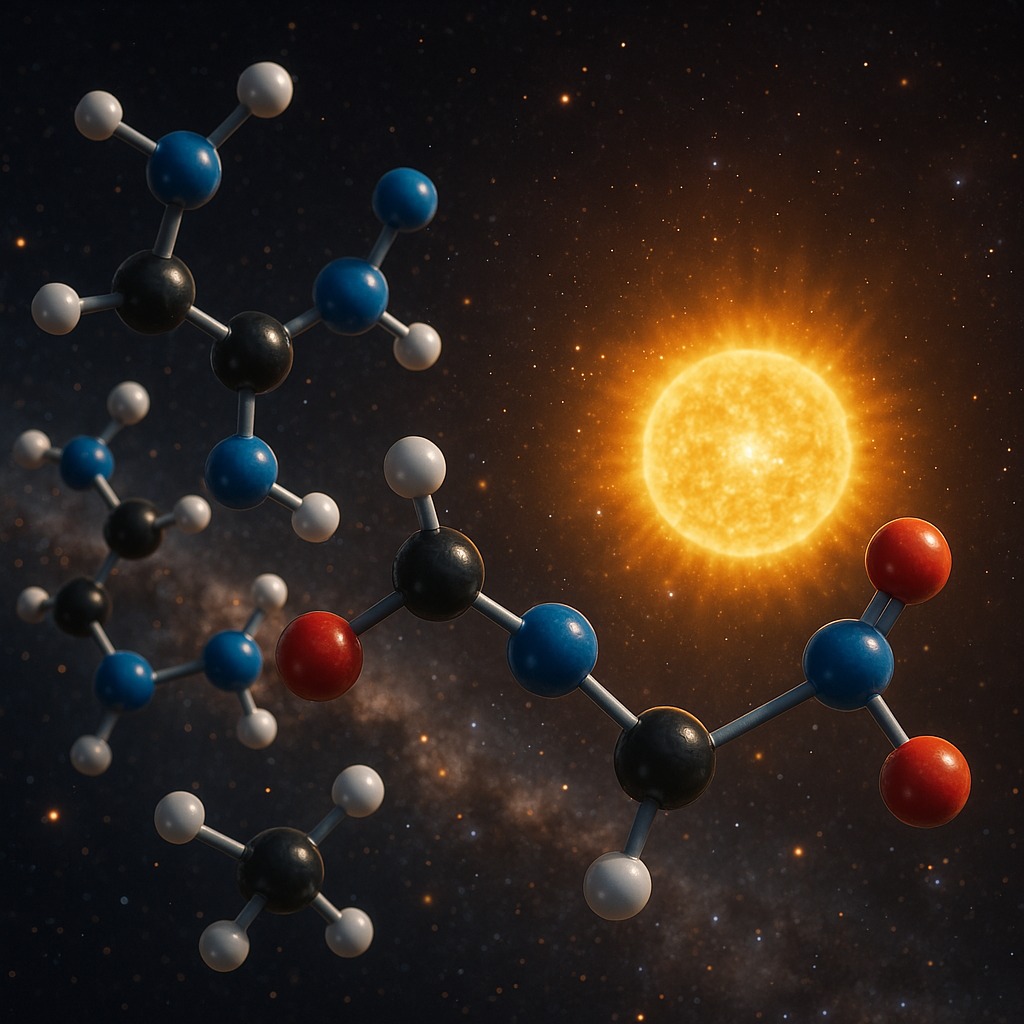
An international team of astronomers has detected traces of complex organic molecules, held sugar and amino acid precursors, in the protoplanetary disk surrounding the young star V883 Orionis. The discovery, destined to revolutionise theories on the origin of life, was made possible thanks to the powerful radiointerferometer ALMA (Atacama Large Millimeter/submillimeter Array), located in Chile and operated by the’European Southern Observatory (ESO).
The research, led by Abubakar Fadu of the prestigious Max Planck Institute for Astronomy in Germany and published in The Astrophysical Journal Letters, reinforces the hypothesis that the fundamental building blocks of life can form directly in interstellar space. According to the authors, these molecules could be most common and widespread than previously thought.
Among the 17 molecules discovered The disc of gas and dust around V883 Orionis includes substances never before detected in this type of environment, such as ethylene glycol e glycolinitrile, both considered crucial for the development of more complex biological molecules.
This result represents a key piece in understanding the evolution of organic molecules from the birth of stars until the formation of planets. The researchers observed that chemical complexity increases progressivelyfrom simple molecules (such as the methanol) in the dense clouds of gas preceding stellar birth, up to sugars, amino acids and nitrogenous bases (key elements of DNA and RNA) found today on comets, meteorites and asteroids of our Solar System.
This discovery opens up new avenues in the search for origins of life and suggests that its key ingredients might be scattered throughout the galaxy, ready to start new biological chapters on distant planets.